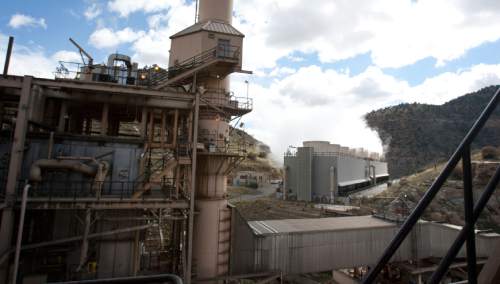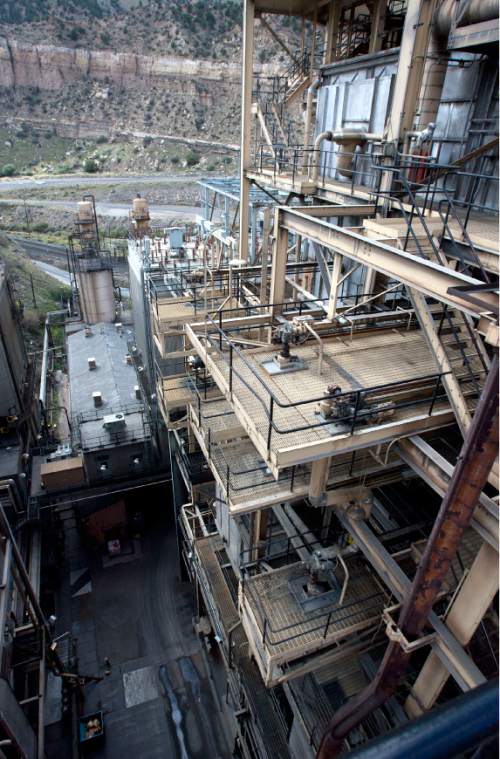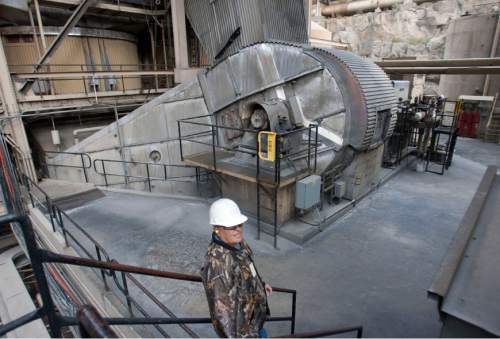This is an archived article that was published on sltrib.com in 2015, and information in the article may be outdated. It is provided only for personal research purposes and may not be reprinted.
As the cost of operating coal-fired power plants continues to rise, customers who buy power from coal-reliant electric companies, including Rocky Mountain Power, could see their power bills go up, according to a new report from the Sierra Club.
The report released Wednesday claims that increased regulation of coal emissions, aging infrastructure and the rising price of coal — as well as more federal subsidies for alternative energy sources — mean it may be more cost-effective for energy companies to invest in noncarbon fuel production.
The Sierra Club's analysis focused on financial impacts it projected for PacifiCorp, the Oregon-based company that delivers and generates power in Utah and five other states. The company, which is known in Utah and Wyoming as Rocky Mountain Power, is both one of the largest energy companies and one of the most coal-reliant in the nation, according to the report.
The analysis comes as Utah's Public Service Commission is reviewing the company's Integrated Resource Plan, which was released earlier this year. The commission is accepting public comment on the plan until Aug. 25. Comments may be emailed to psc@utah.gov.
More than three-fourths — an estimated 77 percent — of the electricity generated by Rocky Mountain Power comes from coal-fired plants, according to the Sierra Club report.
But Margaret Oler, a spokeswoman for the company, said much of the information included in the report appeared to be out of date. For example, she said, the company's Carbon coal-fired plant, which was located in Utah, was shuttered earlier this year.
The Integrated Resources Plan indicates that the company gets about 61 percent of its power from coal-fired plants.
The Carbon plant was included in the report because research was completed before the plant's official retirement in April 2015, said Nathan Landers, a regional manager for the Sierra Club's Beyond Coal initiative.
The remaining Utah coal-fired plants — Hunter and Huntington, outside of Price — remain significant financial liabilities, Landers said.
"The information in this report, pulled from multiple reputable sources, shows there is a financial risk," he said, "to customers associated with those plants that runs into the hundreds of millions to billions of dollars."
Both Utah plants would require substantial repairs and upgrades to attain full control of sulfur, nitrogen, particulate and toxic metal emissions, according to the environmental group. Rocky Mountain Power would have to spend $950 million to $1.1 billion to reach full control at the Hunter plant and $700 million to $800 million at Huntington.
As of now, Oler said, neither the state nor the federal government has mandated any environmental retrofitting at either Utah plant. Moving forward, the company plans to reduce its dependence on carbon fuels and close or convert some existing coal plants to natural gas when it makes sense to do so.
The company already generates about a quarter of its electricity via noncarbon methods, she said, and plans to cut its coal generation by 42 percent by 2034.
The Sierra Club report notes that alternative energy sources create more jobs than coal-based power generation. Estimates show wind power, for example, creates 8.1 new jobs per million dollars invested, while coal provides 3.2 jobs for the same investment.
How to comment
O The Utah Public Service Commission is accepting public comment on PacifiCorp's Integrated Resource Plan until Aug. 25. Comments may be emailed to psc@utah.gov







